https://www.timesofisrael.com/new-carbon-dating-tool-could-determine-if-ancient-eruption-tied-to-exodus/
New carbon-dating tool could pinpoint ancient eruption, discern if tie to Exodus
Calibration technique aims to show exactly when Thera erupted on Santorini, some 4,000 years ago. Volcanic blast has been linked to rise and fall of civilizations, even the Plagues
The ancient eruption of Thera on the Greek island of Santorini has long been a font for popular flights of fancy. The volcano's devastating blast — volcanic rock has been discovered as far away as Greenland — was thought by Plato to be the source of the famous Greek legend of Atlantis. With black ash-filled skies, pillars of fire, and disastrous tsunamis that may have reached the shores of Egypt, the eruption's potential fallout is used as "scientific" source material by some theorists to explain the Book of Exodus plagues, and even the parting of the Red Sea.
While these theories do not currently get much mileage in academic circles, the allure and mystery of the very real eruption of Thera is abiding among scholars attempting to pinpoint its actual occurrence. And because it was such a terrifically cataclysmic event in the Mediterranean, if scientists are able to accurately date the blast, other ancient "floating," or unattributable, dates may fall into place in its wake.
Now, a University of Arizona study on carbon dating methodology could catalyze a shift in the timeline for ancient Mediterranean chronology, and potentially set a firm date for the natural disaster.
In a new article published in the peer-reviewed journal Science Advances called "Annual radiocarbon record indicates 16th century BCE date for the Thera eruption," an interdisciplinary team led by dendrochronologist, or tree-ring expert, Dr. Charlotte Pearson attempts to use high-resolution radiocarbon dating methods to firm up the Thera blast, one of the most elusively undated events of the ancient world.Using the study of tree-rings' radiocarbon-14 molecules, alongside a new proposed annual radiocarbon calibration curve (as opposed to the current decade-averaging approach), Pearson's team aims to arrive at a more precise dating for the blast.
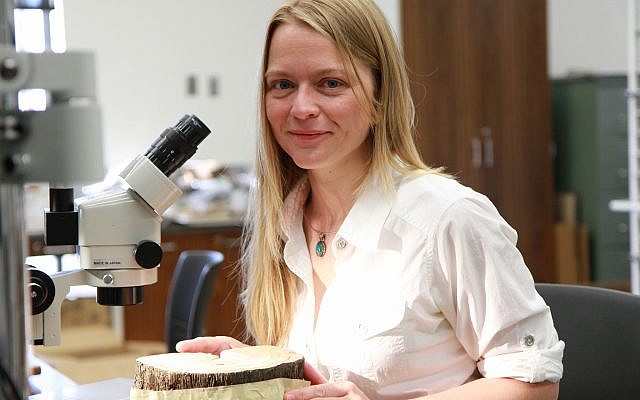
This data, along with radiocarbon dates of several organic samples frozen in time immediately preceding the volcano's eruption, will then be synchronized with archaeological evidence from sites where Thera pumice was discovered, including the Aegean, Egypt, and the Levant — in particular Israel's Tel Ashkelon and Tel el-Ajjul in Gaza.
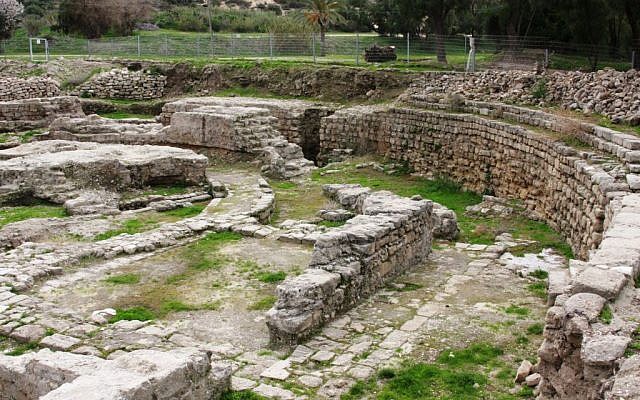
"What we are trying to do is be part of the global realization that the radiocarbon calibration method is ready for an improvement. Because now the technology is there to measure the radiocarbon in every single tree ring, and we're just pulling out one treasure from the box — in this instance the carbon-14, and seeing how that can be applied to improve the way we date material in the Mediterranean… and anywhere in the world," said Pearson, in a video explaining her project.
One of the ongoing problems in dating the Thera eruption is that the timings derived from radiocarbon dating and archaeological evidence do not currently match up: The radiocarbon testing of contemporary organic material consistently results in a date of the late 17th century BCE. However, when archaeological evidence is also taken into account, two schools of thought are formed — a "high" or "low" chronology — which place the blast date about 100-150 years apart, from 1650-1500 BCE.
Now Pearson proposes that the calibration curve may be shifted to an annual resolution to resolve the discrepancy.
"We can use the annual precision of tree rings in combination with carbon-14 to underpin some big questions in terms of the rise and fall of civilizations," said Pearson. "We can look at the tree rings as a timeline and connect with people that lived in the past, and I think that gives us more of a sense of who we are, but also a sense of where we're going and perhaps ways to deal with some of the issues that we might collectively face."
How does C-14 dating work?
Radiocarbon testing was developed by an American former Manhattan Project scientist, physicist Willard Libby, as a tool for archaeologists to date ancient organic material in the wake of World War II. In theory, when radioactive atmospheric rays hit nitrogen in the atmosphere, they form radiocarbon, an isotope that is distinctive in that it has eight neutrons and an atomic mass of 14 (thus the term "C-14").
In the atmosphere, the C-14 is mixed with oxygen to form radioactive carbon dioxide, which is then "inhaled" by plants through photosynthesis. The plants are ingested by animals and transported through their bodies. When the flora or the fauna die, the C-14 also begins to decay. The smaller the amount of C-14, the older the sample, which is then assigned a date according to a calibration scale.
The current iteration of the calibration scale, called IntCal13, was crystalized in 2013 and is increasingly seen as a not fully reliable measure for assigning dates. The curve is based on securely dated findings taken from trees, usually oaks or conifers, from the northern hemisphere. But a recent study from Cornell University's Prof. Sturt Manning asks whether these hardy northern trees are a good source or have the same growing patterns as, for example, olive, which is grown in arid regions such as the Levant.
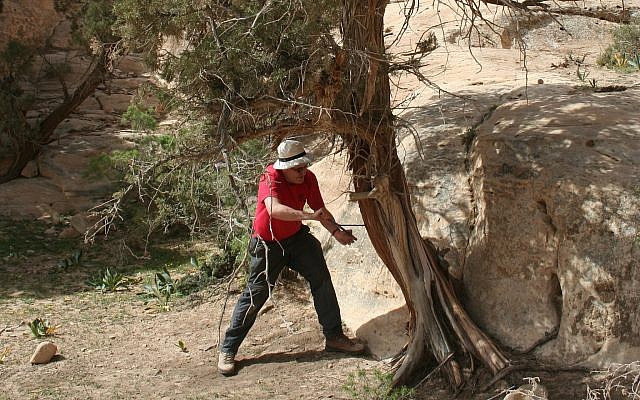
An additional wrinkle, says the new Pearson study, is that the decadal or semi-decadal approach used by most labs today averages and flattens spikes in data. In her study, Pearson pushes for a more high-resolution, single-year focus, instead of taking decades of data and averaging them, so anomalies such as the Thera eruption could be more precisely addressed.
Pearson explained in an email to The Times of Israel that her team attempted to create an annual average plateau from the C-14 records gleaned from individual securely dated tree-rings, such as Irish oak trees and the North American bristlecone pine.
The next stage was to study how annual tree rings' C-14 readings were affected during "spike" events, and how the calibration curve could be improved to accommodate these one-off occasions.
"Such events have already been shown to have a powerful role as anchor points for synchronizing chronologies. But we also wanted to test, given the large amount of annual data that are now being published, how such data might contribute to the onward improvement of the radiocarbon calibration curve. I.e., is there any point in spending time and money on a lot of annual 14C measurements? Could it help improve calibration?" asked Pearson.
In general, the team found there would not be massive shifts in radiocarbon dating calibration using this annual approach — except for cases of catastrophic events such as the Thera eruption.
A radiocarbon ripple effect
The Thera eruption, the focus of the study, was a "spike" in radiocarbon evidence, and its dating could potentially be improved with an annual calibration — to the benefit of many other ancient Mediterranean chronologies.
"The event has been intensively studied from archaeological and paleoenvironmental perspectives because it provides a geological marker that, if precisely dated, could synchronize Bronze Age histories of the Aegean, Egypt, and the Near East and anchor a wide range of contemporary environmental data," according to the paper.
One such example of how dating Thera could influence other cultures is the dating of pharaonic Egypt: It is possible the Thera eruption was noted in contemporary or close-to-contemporary documents found in Thebes.Recently, new readings of ancient Egyptian inscriptions have led scientists to propose an Egyptian documentation of the disaster. On the Tempest Stela, the Pharaoh Ahmose describes a major catastrophic climactic event, including loud explosion, earthquakes, and darkness, according to Nadine Moeller, associate Professor of Egyptian Archaeology at the Oriental Institute, University of Chicago.
"It is now time to consider the possibility that the Tempest Stela is indeed a contemporary record of the cataclysmic Thera event," Moeller wrote in a 2014 article.
According to a 2014 University of Chicago press release about the Stela, Ahmose was the first pharaoh of the 18th Dynasty, which marked the beginning of the powerful New Kingdom. For decades, scholars have debated the actual start-date of the New Kingdom era. Assuming the Tempest Stela is dated in close proximity to the Thera eruption, then Egyptian pharaonic chronology would have a new "anchor" for its timeline.
The Pearson article writes that "evidence indicates that the eruption occurred after the start of the New Kingdom in Egypt, which, according to proponents of conventional, archaeologically based chronology, is considered to be sometime after c.1550 to 1500 BCE."
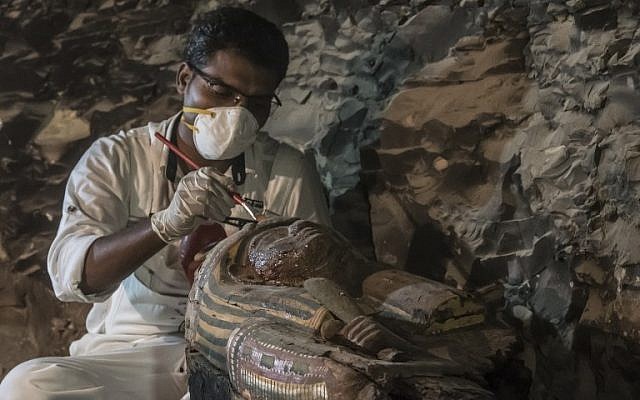
However, according to the Pearson study, "direct radiocarbon evidence for the Thera eruption currently places this event multiple decades earlier than the earliest possible start of the New Kingdom."
For example, in 2006, an olive tree on Santorini that was buried under volcanic ash was radiocarbon dated, and found to pinpoint the Thera eruption between 1621-1605 BCE. While this discrepancy is a blink in terms of the historical record (or the current lifespan of the State of Israel), it causes a clear conundrum for archaeologists and historians.
But is Pearson's annual approach to solving spikes such as Thera earth shattering?
In her study, she writes, "No definitive calibrated radiocarbon range for the Thera eruption is currently possible, but the altered position of the 14C plateau indicates that improved calibration has much to offer chronological synchronization of human and environmental timelines in this period." To paraphrase, while she cannot arrive at a solid timing for Thera, the methodology of the calibration curve may still benefit.

Fellow dendrochronologist Sturt Manning, a professor at Cornell University, told The Times of Israel that the Pearson study has an "impressive dataset" and that the results were "a little bit of a surprise," for which he awaits confirmation from other labs.
"I suspect when other labs have run data on 1-year samples in this period the 'real' picture will be somewhere between the previous one and the Pearson et al. findings. So some change but rather less dramatic," Manning said.
"Even so, Pearson et al. over-claim. Their revised curve, even if right, does modify dates just in this period, yes. But where there are sequences of 14C dates from longer order series, whether archaeological, or from the series of Pharaohs, etc., then it will make much less difference as the rest of the calibration curve is not changed they say," he wrote.
A source for Exodus?
The new dating doesn't only affect the timing of the eruption of Thera or Pharaoh Ahmose's reign and the start of the New Kingdom. It could also help assign dates to other important events such as the end of the Babylonian Empire, as well as the rise and fall of the Anatolian Hittites and the mysterious Semitic-speaking people called Hyksos.
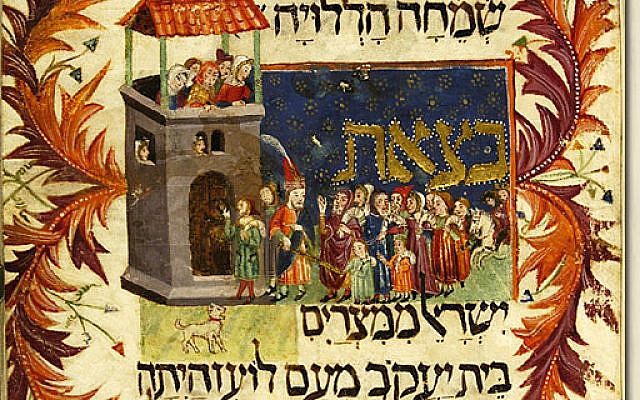
Some theorists say dating Thera could solidify the natural source of the Exodus narrative as well.
Asked whether she sees her study as having implications on the dating of the roots of the biblical Exodus story, Pearson questioned her qualifications to answer. In an email she wrote, "All I can say is that continued work to improve chronological frameworks is essential for the study of past civilizations!"
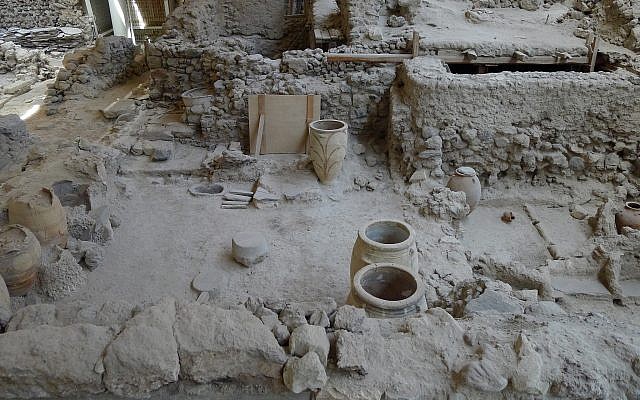
There is no doubt the eruption was an event of biblical proportions. According to Greek archaeologist Christos G. Doumas who excavated on Santorini from the 1970s to 1990s, "When the volcano literally 'blew its top,' the sides of the mountain collapsed into the abyss; then the sea poured into this great caldera — 32 square miles of it… The blast was so powerful that the eruption column reached an estimated height of 20 miles, sending particles of dust hundreds of miles away," writes Doumas in a 1991 Biblical Archaeology Review article.
Every decade or so, there is a scholar or ostensible scholar willing to go on record and state that the Thera blast may have caused the Exodus narrative. In the 1980s, Johns Hopkins Prof. Hans Goedicke was lauded by the New York Times, then raked over the coals for his suggestions.
An entertaining, if not entirely drily factual, 2006 documentary called "The Exodus Decoded" by Canadian "Indiana Jones" filmmaker Simcha Jacobovici and producer/director James Cameron caused waves of backlash in scholarly circles.
In general, the theories state that Thera jump-started tsunamis that could have caused the parting of seas (location is subject to change depending upon the scholar). Additionally, it may have sparked a pillar of fire in the sky visible as far as Egypt.
Other environmental effects of the Thera eruption likewise may have caused "some major hemisphere-wide climate episodes" that could link to the plagues, wrote Cornell's Manning in an email outlining the more popular theories. Some scientists tie the dating to the Israelites in Jericho, based on radiocarbon dating of the city's destruction.
The linkage between Thera and the Exodus narrative is fodder for numerous articles, books, and even conferences, including the one held in 2013 at UC San Diego called "Out of Egypt: Israel's Exodus Between Text and Memory, History and Imagination" where University of Edinburgh's Dr. Mark Harris, a former physicist and current theologian, delivered the lecture "The Thera Theories: Science and the Modern Reception History of the Exodus."
In his witty 20-minute talk, Harris broke down the various "Thera theories," and noted that, regardless of their pseudo-scientific questionable veracity, the "volcano remains a rich resource for the imagination."
The theologian said that implementing it as an interpretation of the miracles is as legitimate as reading the text through a feminist lens or through liberation theology.
"The Thera theories give us 'scientific readings.' They challenge or inspire the imagination without necessarily requiring a firm historical commitment that this is what really happened," said Harris.
He personally does not think Thera had a role in the Exodus, but clearly fathoms the impulse of those who do.
"There is a fascination with the Bible in the popular imagination, and there's a fascination with science, and when the two get together, you literally get an explosive combination," said Harris.
-- Sent from my Linux system.
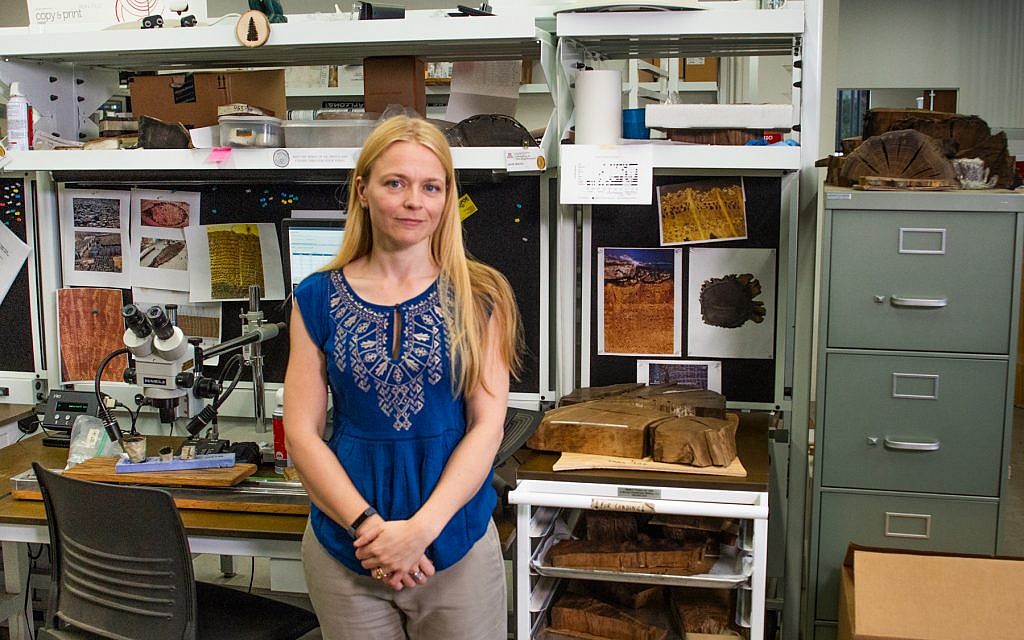
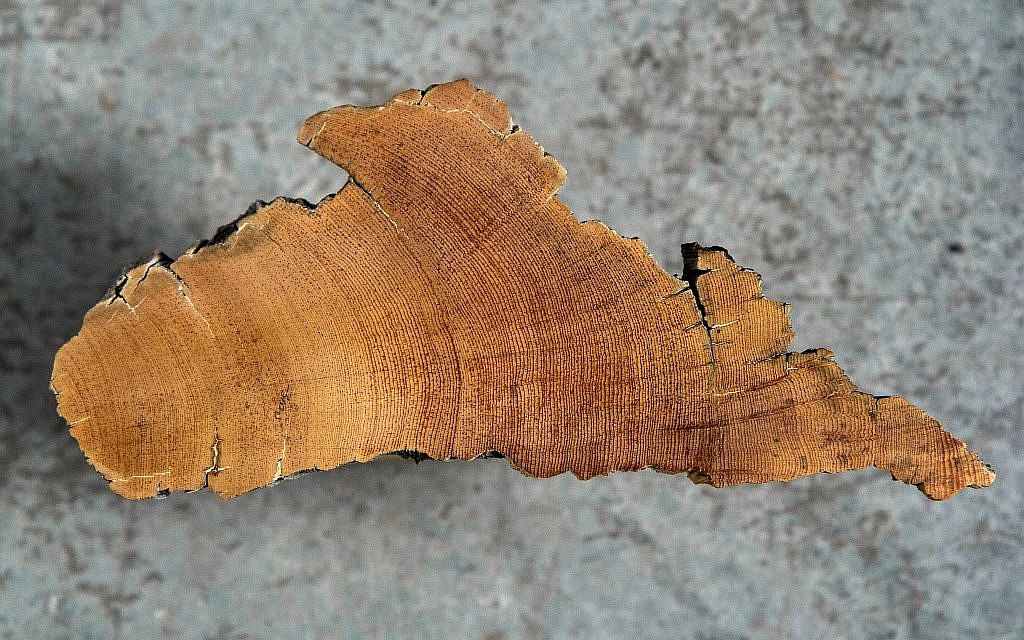
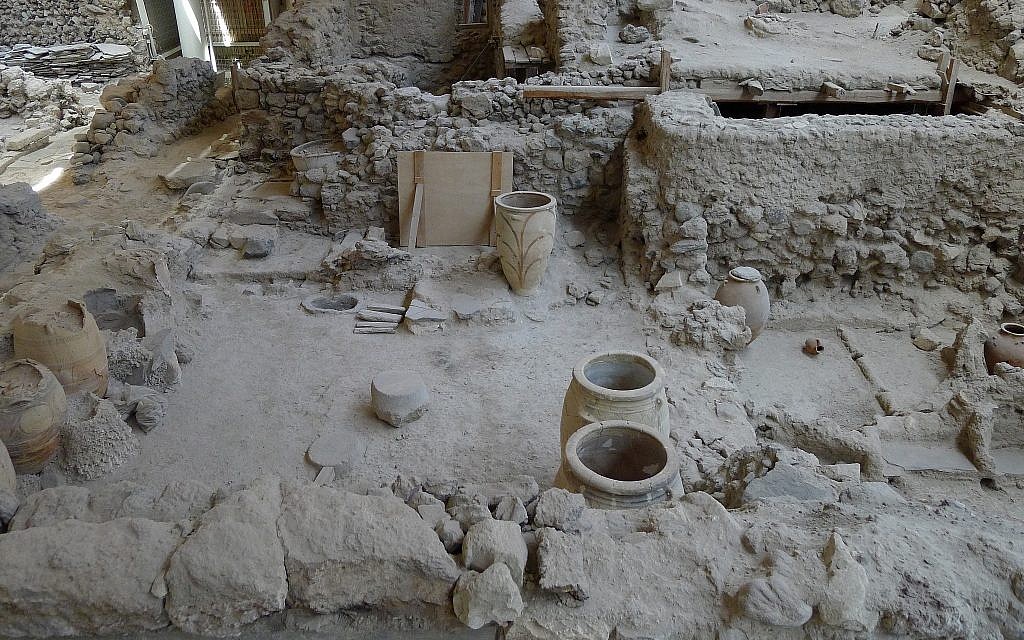
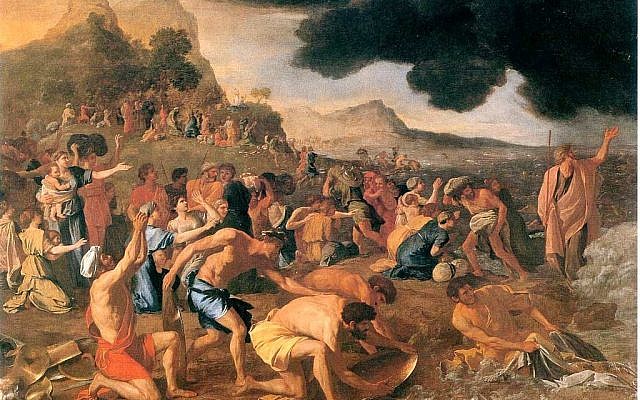
No comments:
Post a Comment